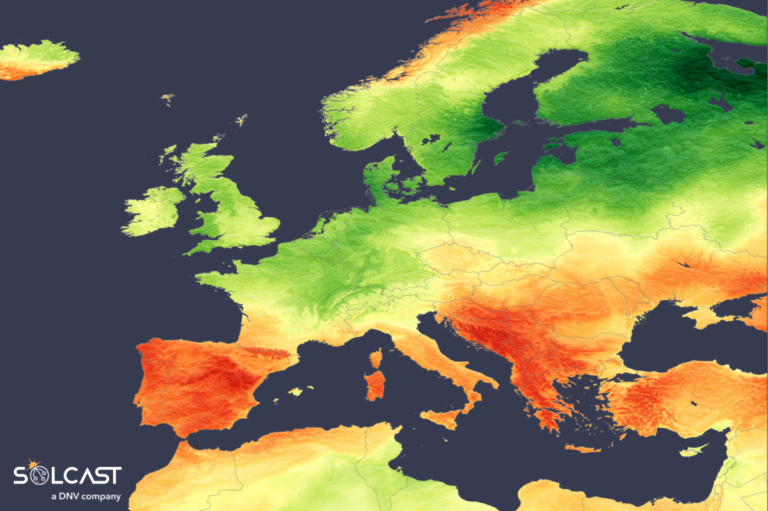In a new weekly update for pv magazineSolcast, a DNV company, reports that April weather in Europe showed a north-south divide that affected solar power generation across the continent. High-pressure systems over the Mediterranean Sea ensured that conditions in Southern Europe were sunnier than normal, which benefited PV production.
April weather in Europe created a divide between north and south, impacting solar energy generation across the continent. High-pressure systems over the Mediterranean Sea ensured that conditions in Southern Europe were sunnier than normal, which benefited PV production. Successive low-pressure systems in the north resulted in cloudier weather that affected solar energy generation. Around the Mediterranean there were some dust transport events in April, where airborne dust will have affected radiation, and pollution may have affected generation, but these one- to two-day events are not visible in the monthly averages.
In the Iberian Peninsula and around the Mediterranean and Black Seas, conditions were sunnier, with radiation levels up to 15-20% above the long-term average in April. Solar assets in Bosnia and Herzegovina, Croatia, Turkey, Greece, Spain, Portugal and parts of Italy benefited from these conditions. The increase in insolation levels was attributed to clear skies and calm weather, caused by higher than usual pressure for this time of year.
In contrast, April was a cloudy and rainy month for Northern Europe, resulting in reduced PV generation. This cloud was caused by successive low pressure systems in the region from the North Sea, which explains the 15-20% below average insolation in the Baltic states, Finland, Sweden, Denmark, Germany, France (excluding the south), the Benelux countries, the United Kingdom and Switzerland. The Baltic states and Finland were hit the hardest: irradiance was 20% below normal, which equates to an average irradiation of only 3 kWh/day.

In contrast to the general irradiation level in Northern Europe, the northern parts of Norway received 10% more than normal irradiation. This can be attributed to the low pressure systems moving further south, reducing the usual cloud cover in the far northern regions. However, the likely impact on solar production here is low, as insolation at these northern latitudes is only 3.0-3.5 kWh/day and the regions are sparsely populated.
There were several cases of dust transport from the Sahara to Europe in April. These took place in early April across Spain and on April 23 and 24 in Greece and Ukraine, reducing local irradiance by up to 25% of daily irradiation. Due to the short duration of these events, they are not visible in the monthly average irradiance, but dust pollution from such events can have long-lasting effects on PV generation.
Solcast produces these figures by tracking clouds and aerosols worldwide at a resolution of 1-2 km, using proprietary satellite data AI/ML algorithms. This data is used to drive irradiance models, allowing Solcast to calculate high-resolution irradiance, with a typical deviation of less than 2%, as well as cloud tracking predictions. This data is used by more than 300 companies that manage more than 150 GW of solar energy worldwide.
The views and opinions expressed in this article are those of the author and do not necessarily reflect those of the author pv magazine.
This content is copyrighted and may not be reused. If you would like to collaborate with us and reuse some of our content, please contact: editors@pv-magazine.com.


